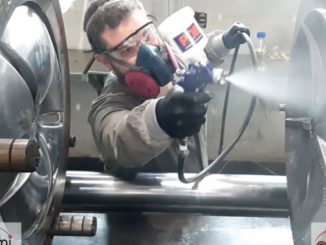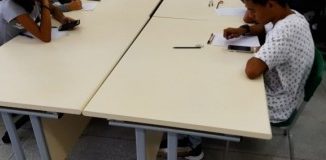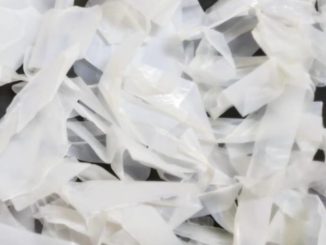
A multidisciplinary research team from the Universitat Jaume I (UJI) in collaboration with the Center for Development of Functional Materials (CDMF) of Brazil has shown for the first time the efficient synthesis of bismuth tungstate (Bi2WO6) through a microwave-assisted hydrothermal method and its subsequent femtosecond laser irradiation, which is responsible for the total crystallization of Bi2WO6.
Bismuth tungstate is an important semiconductor with different morphologies, which allows for different technological applications. The aim of the research has been to obtain a crystalline Bi2WO6 with a very defined morphology and with suitable properties, to be used as a photocatalyst in the degradation of compounds harmful to health.
The work was carried out by Juan Andrés, head of the Laboratory of Theoretical and Computational Chemistry; Gladys Mínguez-Vega and C. Doñate-Buendía from the Institute of New Imaging Technologies (INIT) of the UJI, Professor Elson Longo, director of the CDMF, and Ivo M. Pinatti and Amanda F. Gouveia from the same center. It has been published in the journal Scientific Reports, titled “Femtosecond-laser-irradiation-induced structural organization and crystallinity of Bi2WO6.”
The research that has given rise to this publication was carried out during a stay of Dr. Ivo Pinatti of the CDMF at the Laboratory of Theoretical and Computational Chemistry of the UJI. Different experimental characterization techniques were used to elucidate, at the atomic level, the structural and electronic order at short, medium and long distance of this semiconductor. These results coincided with the predictions derived from mechano-quantum calculations, using theoretical and computational chemistry methods and techniques. On the other hand, the theoretical results allowed designing and directing the synthesis to obtain Bi2WO6 with a specific morphology and with adequate properties to be later used in a technological or industrial application.
Controlling the structural organization and crystallinity of semiconductors is key to improve their performance in technological applications. The hydrothermal method, assisted by microwaves, is the fastest and cheapest procedure to be able to handle and obtain materials with different morphologies. Furthermore, it is a green synthesis method, respectful with the environment and very efficient to develop new materials and optimize their properties. The research shows that, despite the fact that the synthesized material is pure, without contaminants or undesired phases, it had little crystallinity. The subsequent irradiation of the material with the femtosecond laser allowed the complete crystallization of this semiconductor.
The present work is another example of the originality of the R&D&i projects developed from the Laboratory of Theoretical and Computational Chemistry at the UJI, which is based on the combination of theory and simulation with experimentation. This strategy has allowed finding and designing structure-activity relationships and obtaining physical and chemical properties of innovative materials for specific technological applications. In this case, the potential of synthesized Bi2WO6 as a catalyst for obtaining hydrogen, for the degradation of dyes or drugs, and as a bactericidal, fungicidal and antiviral agent is being studied.
For more than fifteen years, and thanks to the collaboration between the UJI’s Laboratory of Theoretical and Computational Chemistry and the CDMF in Brazil, it has been possible to synthesize nanomaterials that are used as advanced catalysts and biological agents, as well as to develop and optimize manufacturing processes.
On the other hand, new materials have been obtained and their properties modulated for technological applications, such as gas sensors, photocatalysts, and materials containing silver nanoparticles, synthesized by electron or laser irradiation, with very powerful bactericidal and antifungal properties. Moreover, 14 patents have been obtained and different technology-based companies (spin-offs and start-ups) have been created.
The consolidation of this multi- and interdisciplinary profile, together with the quality of the results obtained at the forefront of knowledge, is a step forward in basic and oriented science, and has managed to position the UJI’s Laboratory of Theoretical and Computational Chemistry as an international reference in the development and implementation of new technologies in advanced materials and nanotechnology. Its director, Professor Juan Andrés, has established a new field of R & D & i in a vast action framework in which chemistry, physics, quantum mechanics, materials and surface science, catalysis and nanotechnology converge.
First on PHYSORG: Here.



